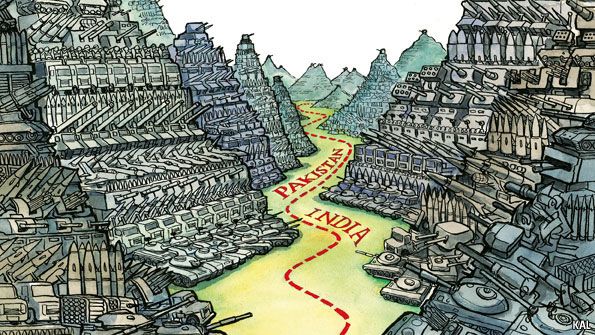为大家整理了一篇关于军事方面的雅思阅读材料,这篇雅思阅读材料的主要内容是关于印巴边界的问题的。这个边界被称之为世界上最危险的边界,为了减少恐怖主义的威胁,西方世界应该帮助这两个国家化解矛盾。下面是详细内容,来自economist。
The world's most dangerous border
To reduce the risk of terror, the West must help defuse tension between India and Pakistan

THE late Richard Holbrooke, the Obama administration’s envoy to Afghanistan and Pakistan, had many virtues as a diplomat, but tact was not among them. His description of his theatre of operations as “AfPak” infuriated the Pakistanis, who wanted the Americans to regard their country as a sophisticated, powerful ally worthy of attention in itself, not just as a suffix to the feuding tribesmen next door. But that was not the only reason the coinage was unwise. It encouraged the understandable American tendency—shaped by the Soviet occupation of Afghanistan, the war against the Taliban and now the death of Osama bin Laden—to see Pakistan in the context of the fighting on its north-west frontier, and thus to ignore the source of most of the country’s problems, including terrorism: the troubled state of relations to its east.
The border between India and Pakistan has seen a bloody partition in 1947 that killed hundreds of thousands; more than 15,000 dead in three wars and 25 years spent fighting over a glacier; 40,000-100,000 dead (depending on whom you believe) in the insurgency in the disputed province of Kashmir. And now both countries are armed with nuclear weapons.
Bloodshed over the border is not the only measure of the damage this poisoned relationship does. In India it exacerbates feuds between Muslims and Hindus. But Pakistan has been worse affected. Fear and hatred of India have distorted its world view and politics (see article). Ignoring this—as the West seems to be doing again—is a terrible mistake, especially because a settlement is not beyond reach.
Pakistan’s obsession with India has damaged it in three ways. First, it has given its generals too much power. Pakistan’s army, at 550,000 men, is too small to match India’s 1.1m, but too big for Pakistan. The armed forces eat up 16% of the government’s budget, whereas education gets 1.2%. Because the armed forces are powerful, the government is weak; and the soldiers’ frequent interventions in Pakistani politics exacerbate this imbalance and undermine democracy.
Second, it has shaped Pakistan’s dealings in Afghanistan. In the 1990s Pakistan helped create the Taliban partly in order to undermine India’s allies in northern Afghanistan. Although it signed up to fight the Taliban after September 11th 2001, Pakistan has continued to protect some of the Taliban in order to counter India’s influence in Afghanistan.


